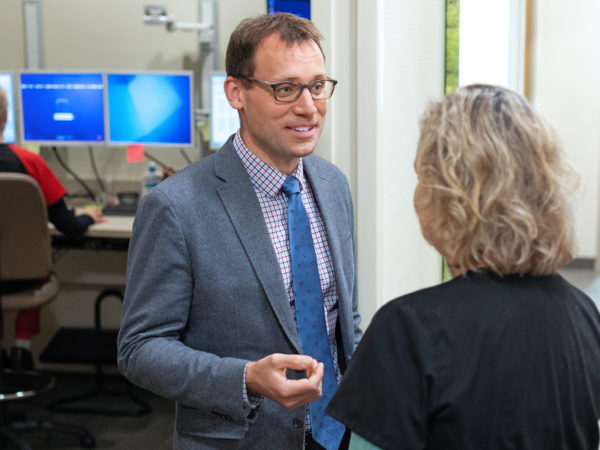
Lung cancer is the third most common cancer in the U.S. It’s more common in men than in women, but it is the leading cause of cancer deaths for women in the United States, almost double the rate for breast cancer. Leading causes of lung cancer itself are tobacco, radon, air pollution.
Here in Minnesota, we rank 21st among all states in the rate of new lung cancer cases – significantly lower than the national averages. The 2021 “State of Lung Cancer” report from the American Lung Association reports that Minnesota ranks fourth in the nation for the five-year survival rate.
Lung cancer incidence and mortality rates vary across Minnesota, but rates are higher in Greater Minnesota than the seven-county Metro. Native Americans are the highest risk group. Black people have a slightly higher risk than white people. Latinos and Asian-Pacific Islanders have the lowest risk. Ninety-eight percent of deaths occurred in Minnesotans aged 50 or older.
What are the types of lung cancer?
Like all cancers, lung cancer is a complex disease with many variants, but two types are the most common.
Non-small cell lung cancer (NSCLC) is the most common type of lung cancer, accounting for over 80% of lung cancer cases.
Small cell lung cancer (SCLC) grows more quickly and is harder to treat than NSCLC, in part because it’s fast-growing cancer that spreads quickly. Almost all cases of small cell lung cancer are due to cigarette smoking.
Other types of cancer can start in or around your lungs, including lymphomas (cancer in your lymph nodes), sarcomas (cancer in your bones or soft tissue) and mesothelioma (cancer in the lining of your lungs).
Radiation therapy and lung cancer
Radiation is most often an adjuvant therapy for lung cancer; that is, it’s used in combination with surgery or chemotherapy. Radiation can be targeted with precision and accuracy. In most cases, radiation therapy is used to shrink tumors before surgery or to kill remaining cancer cells after surgery. If surgery isn’t an option, combined chemotherapy and radiation therapy may be your primary treatment.
Sometimes patients with small cell lung cancer (SCLC) will get radiation to the brain. This helps to lower the chances of the lung cancer spreading to the brain, which is common in SCLC. This is called prophylactic cranial irradiation.
Radiation Techniques for Lung Cancer
At MRO, our care teams use several different radiation techniques to administer therapy. Radiation may come from outside the body (external) or from radioactive materials placed directly inside the lung cancer tumor (internal/implant).
External radiation is most used for lung cancer. Precise doses of radiation are aimed at lungs or surrounding areas using a machine called a linear accelerator (LINAC) The advanced technology we use at MRO allows radiation beams to be targeted down to the millimeter, and shaped to match the tumor, to minimize any damage to surrounding tissue. This is particularly important for cancer in the left lung, to avoid damage to the heart.
Sometimes we use external radiation as the main type of lung cancer treatment. This is often the case for people who may not be healthy enough to have surgery or whose cancer has spread too far to have surgery. Radiation therapy for lung cancer is also used to relieve symptoms caused by the cancer, such as pain, bleeding, or blockage of airways by the tumor.
Radiation therapy is customized for each patient, so your experience depends on a variety of factors: the location and type of your tumor, your radiation dosage, your general health, and any other treatments you may be receiving, such as chemotherapy.
In general, radiation has fewer side effects than chemo, but you still may experience side effects, such as nausea, skin changes, and temporary damage to the chest that causes coughing and shortness of breath.
Lung Cancer in Minnesota by the numbers
Over the last five years, the rate of new cases in Minnesota dropped by 15%.
- # 4 in the nation for survival at 27.7%.
- # 21 in the nation for new lung cancer cases at 55.7 per 100,000 people.
- # 8 in the nation for early diagnosis at 26.6%. Nationally, only 24.5% of cases are diagnosed at an early stage when the five-year survival rate is much higher.
- # 21 in the nation for lung cancer screening at 7.1%. Lung cancer screening with annual low-dose CT scans for those at high risk can reduce the lung cancer death rate by up to 20%. Nationally, only 5.7% of those at high risk were screened.
- #13 in the nation for surgery at 21.8%. Lung cancer can often be treated with surgery if it is diagnosed at an early stage and has not spread. Nationally, 20.7% of cases underwent surgery. – Source, American Lung Assn.


